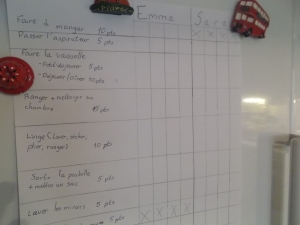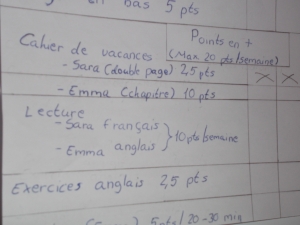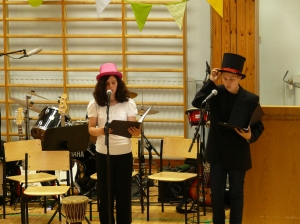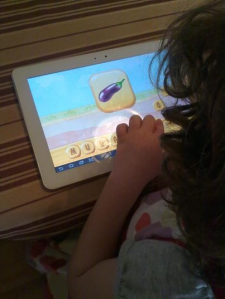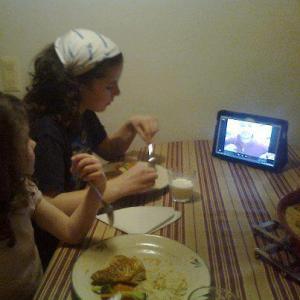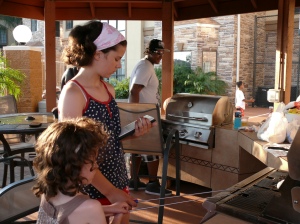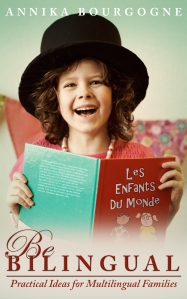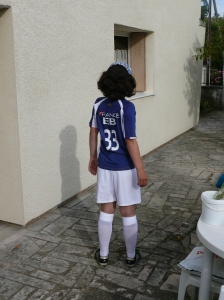A few years back, I heard a story about pelicans in California. Their great numbers had been a real tourist attraction in Monterey Bay for many years, but the situation had changed unexpectedly and the pelicans had started to die. Experts, biologists, you name it, flew in to study the problem, which was soon linked to the extinction of the local tuna fishing trade. It was found that the pelicans had been leading life a little too easy for their own good, following the fishing boats and feeding on their catch. Now that the fishermen and their boats were gone, the birds were confused and hungry – they no longer knew how to hunt for food! Not having had the need to actually find and catch their food had meant they gradually lost the ability to do so.
A solution was found in the form of pelicans that did know how to hunt. They imported hundreds of them to Monterey Bay from Florida, where they had been hunting for food in the normal pelican way. They quickly adjusted and started doing the same in California. Surrounded by these “natives at fishing”, and motivated to follow their example, the local pelicans also began feeding and the crisis was averted after just a few months.

Finding “pelicans” in the community
Sometimes, speaking the minority language is like catching fish in this story. If the children don’t have a need to use the language, it is very probable that they won’t and the skill is then slowly lost. Experts tell us that children require first and foremost a need and a motivation to use the language, and suggest that surrounding bilingual children with natives, preferably other children, often presents the best opportunity for this. Wanting to play with and be understood by other children seems to be one of the best motivators for a child to use his or her second language. The minority language becomes a natural means of communication, and any self-consciousness about possible errors or gaps is quickly forgotten when the children concentrate on playing and just getting the message across.
So, how do you go about it? The easiest and most efficient way to accomplish this is by taking the children from their usual surroundings and into the natural environment of the second language. A trip to your minority language home country, or to another country where that language is spoken, is definitely a fantastic way to solve many issues related to the acquisition of that language. However, the country in question may be far away and a trip not possible for many reasons. Here we can learn from the pelican story. Just as the local birds reacquired skills from the foreign birds flown in, our children can learn from the children in our community who speak the minority language. Try these ideas:
Look for (or organize) playgroups with other speakers of your minority language – and cross your fingers that the children will play together using that language. This happening is the best-case scenario, if all the other children also speak the majority language. Parental experience seems to show that the older the children, the less likely they are to use their minority language the moment they figure out that using the majority language is an option. We may care about them speaking our language, but all they will care about is using whatever is the easiest and most efficient way to get the message across. Activities organized by a native-speaking parent are therefore a good way to get your children to participate, and why not invite some “pelicans” to join the playgroups? Perhaps you could look for recently-arrived expat families – there might be Facebook groups, the local embassy might have lists or cultural activities where you can meet them, and word-of-mouth is also a very good way to find out about new arrivals. They might be very happy to meet locals, and your children could make new friends that are (at least for the time being) monolingual speakers of their non-community language.
Become a host family for couchsurfers. Sign up with couchsurfing.org to host travelers that speak your language. This can be an option even if you can’t accommodate the travelers in your home. Many are happy just to get to see the city through a local’s eyes.
Take advantage of modern technology, which offers many ways to connect children with other speakers of their minority language. If you have family in your target country that has access to a computer, then Skype is a must. For children to actually see and talk with grandparents, uncles and aunts on a regular basis is a great way to keep in touch with both the family and the language. This creates emotional ties with the language and makes things easier when traveling to meet the family.
Similarly, you can stay in touch with other families that you may have met during travels in the minority language country, in order to extend and create friendships with other people and children who speak the same language. If none of this applies to you, how about looking for other families through language exchange sites like The Mixxer or mylanguageexchange.com? Alternatively, you could post about finding Skype partner families who speak your language on forum websites such as multilingualliving.com.
The girls’ grandmother in France recently got a computer for Christmas. The first thing we did was to install Skype on it with instructions about how to contact different family members. As Emma comes home from school in the afternoon and turns on her computer and Skype, grandma often calls her and they talk – just like they might if she lived next door, and not 2000 km away! They can have a private conversation, which can be as short or as long as they wish, since it’s free. As it turns out, grandma is often privy to a lot more information than we parents are!
Going native – traveling to your minority language country
Experts agree that traveling to a country where your minority language is the community language has many advantages, the first one being that the children will probably have a newfound respect and appreciation for the language, as they see that it is not only spoken by mom or dad, but by a whole nation on a daily basis. There is an actual need and motivation to use the language to interact with locals, and this will yield great results, especially if a little planning is done to make sure that some interaction actually happens. Just breathing the air in another country will not have any effect on your children’s language skills, whereas interaction with locals, preferably children, will.
Before traveling to the target country most parents are excited, but maybe also concerned about how to make the most of the trip, especially if the country is far away and can’t be visited that often (I speak from experience when I say that the trip can be a financial sacrifice). Those who are not boarding with family or friends need to think about places to stay and how to provide opportunities for the children to practice their language skills. The ones with family have different concerns, maybe about living with the in-laws for several weeks. Both might worry about the children and how they will manage with the language and be accepted by other children, friends, or even family members.
Among the first things to decide is the length of the trip. Any length is better than none, but seeing as it takes about a week for children to completely adjust to a new language environment, anything less than that might not allow them to fully benefit from the experience. Between two and four weeks seems to be a good length for a stay (the longer the better, really), but with careful planning even shorter trips can be useful in giving the child’s language skills a boost and providing the motivation to use them. For financial reasons or to avoid the crowds, many families travel during the off-season.
Finding local activities for children when traveling on your own
There are times when being a tourist is a great thing, but this is one time when you want to blend in as much as possible with the locals. This doesn’t mean that you need to skip all the tourist attractions, but it’s good to plan ways for the children to meet other locals, and play with others of similar age. From them your children will learn the local “play” language and children’s nonverbal behavior, which they won’t pick up if they’re only around adults.
In addition to the idea of contacting families and setting up playdates through organizations such as couchsurfing.org, you can look for an expat network in the area and ask them for advice about activities and places where your children could meet other children. Ask for tips and advice from locals on the forums of neighborhood parenting websites. You could also visit the local tourism office website or send them an email to ask for advice on your situation.
Travel communities such as tripadvisor.com are not only helpful when choosing accommodation, but are also great for ideas regarding what to do with the children in a particular city or smaller towns. Depending on when and for how long you’re staying, and what your children enjoy doing, here are a few ideas you might consider:
Going to school in the target country. Before you think that I’m crazy to suggest this, just hear me out: vacations don’t always take place at the same time in different countries and, particularly if you’re traveling during the off-season, it might be that the local children are all at school during the day. Many schools welcome children who live abroad but speak the language to spend a few days, or even a few weeks as guests. This can be a good way for your children to see what school life in the target country is like, and hopefully meet new friends. Perhaps you can find some expats online before you travel who could tell you whom to contact in the local school their children attend.
To prepare for the experience, your child (or even the whole family) can write a letter to the class and send postcards or something similar from your country of residence. This will not only prepare your child but the whole class for their initial meeting. Integration is also much easier for a familiar child that the class already knows. After a successful stay, your child can continue writing letters or even skyping with their new school friends.
Our daughters have successfully attended a local village school in France for the last two weeks of the school year. The exam season was over, and most days consisted of trips to the swimming pool, excursions, and preparing an end-of-school-year performance for parents. To tell the truth, our children were a bit reluctant at first, but they ended up really enjoying the experience, and made many new friends in the village. This made all the difference during our stay; trips to the pool and the library were so much more fun when there were friends that could be invited along. I realize that this might not be as easy in big cities as in a small village, and if your children struggle with the language and are not enthusiastic about speaking it, this is probably not the option to start with.
Practising with the locals. Many parents have told me they found enrolling their children in local swimming lessons to be an effective way to meet other children. The same idea can be applied to other types of lessons, such as horse riding, martial arts, or whatever is interesting to your children and available in their age range. If your children have a social hobby at home (a sport or playing an instrument), why not ask the local clubs and organizations if they can participate as guests during your stay. Not only can it be motivating for the children to experience their hobby in the minority language – something they’re already familiar with and can grasp the concepts of easily – but it can lead to playdates and friendships with local children. Last summer, Emma had a great experience with a French soccer team who welcomed her to practice and even participate in a tournament with them.
Summer camps.
-
Day camps. Local libraries and community centers are great sources of information on what the local children are up to. They usually know (or can at least advise you where to ask) about day camps and workshops for children during school vacations. In France, for example, municipalities organize outdoor childcare (centres aérés), which corresponds to a day camp, during school vacations.
-
Overnight camps. A great possibility for your children to mix with other children is for them to attend a camp for a few days where they can be immersed in their minority language. A good site to find all kinds of camps around the world is kidscamps.com. Again, the expat network, local parenting websites, the tourism office or local schools should be able to help out with this. There can also be camps that specialize in an activity your child practices or likes, so check those clubs and organizations, too.
Other
Get your children a temporary library card at the local library if their policy allows. We’ve noticed that libraries are always full of other children. On several occasions, I’ve successfully approached them, explained our situation, and asked if they could show Emma some books they like.
Visit the Global Greeter network’s website (globalgreeternetwork.info), which brings together local volunteers who give free tours of cities. If you’re in luck and your target city is on the list, take advantage of this great opportunity to get an insider’s tips on the community.
Motivate the children to use the language by giving them a small allowance that they can use for small purchases – in the minority language, of course.
Always bring a few extra toys when visiting playgrounds, parks or beaches so that your children can invite others to play with them.
Abridged extract from Be Bilingual – Practical ideas for multilingual families by Annika Bourgogne

